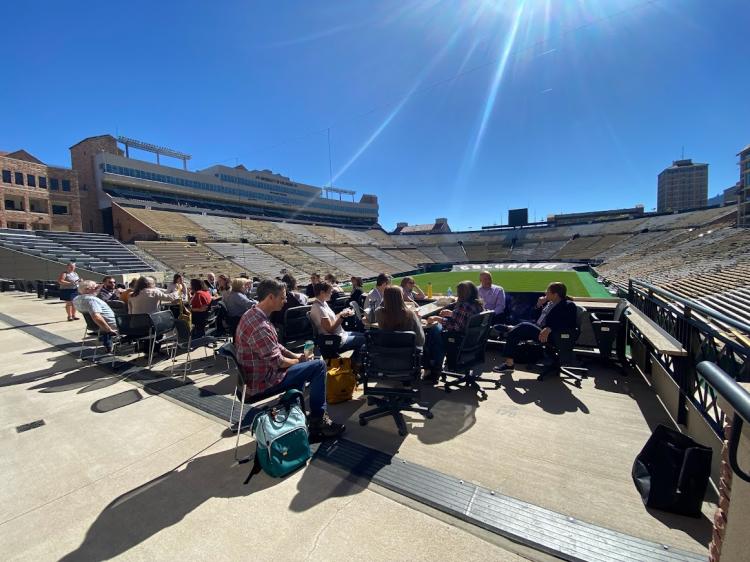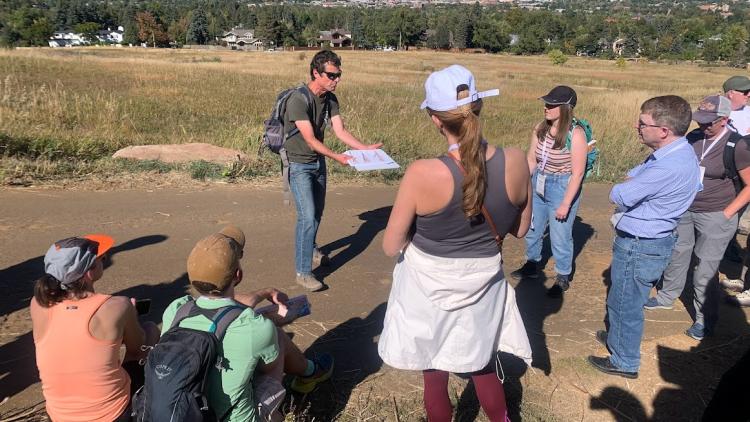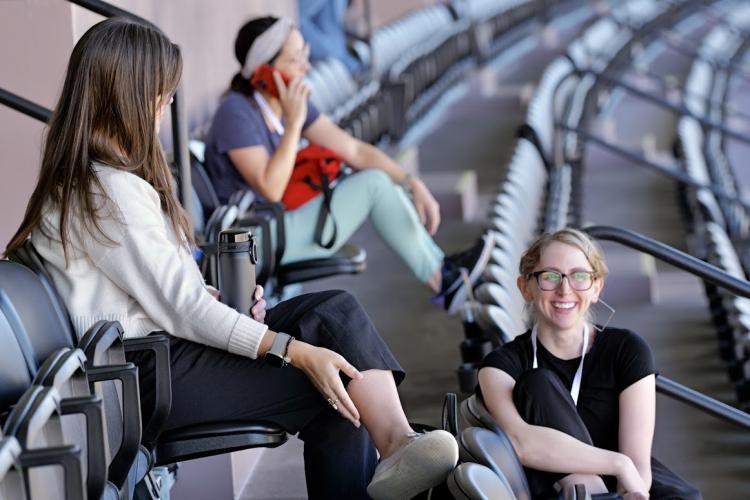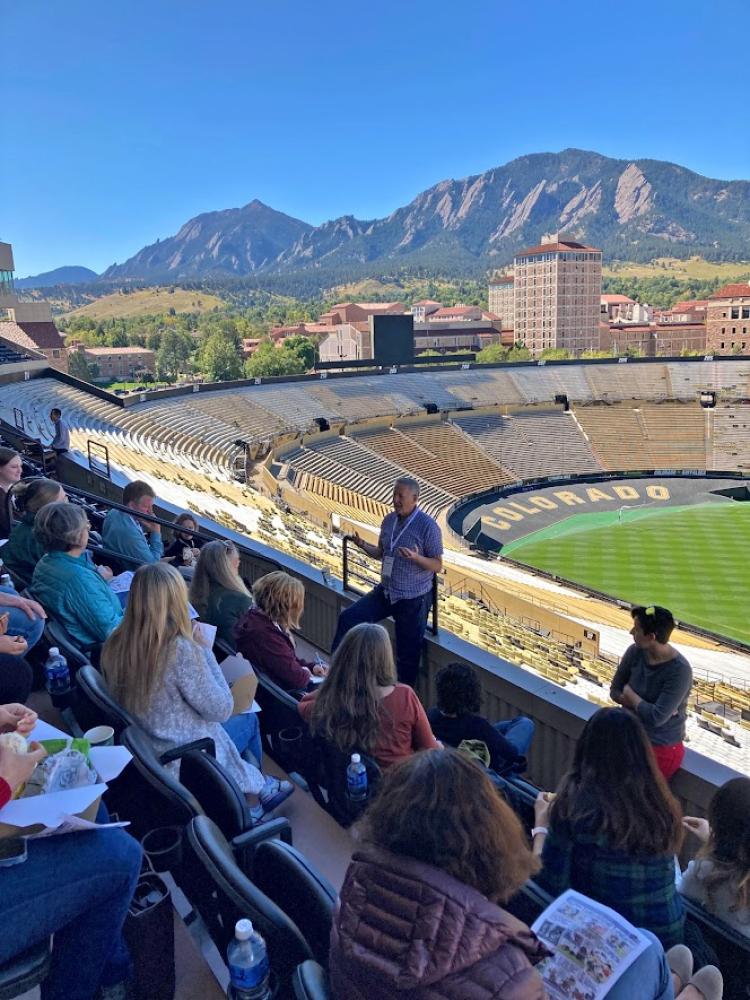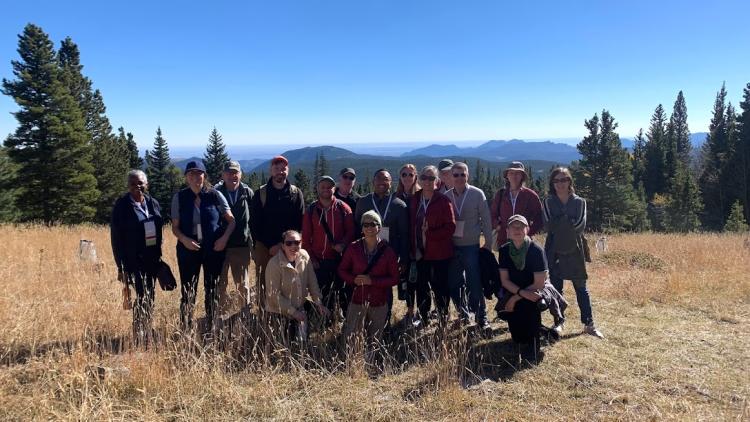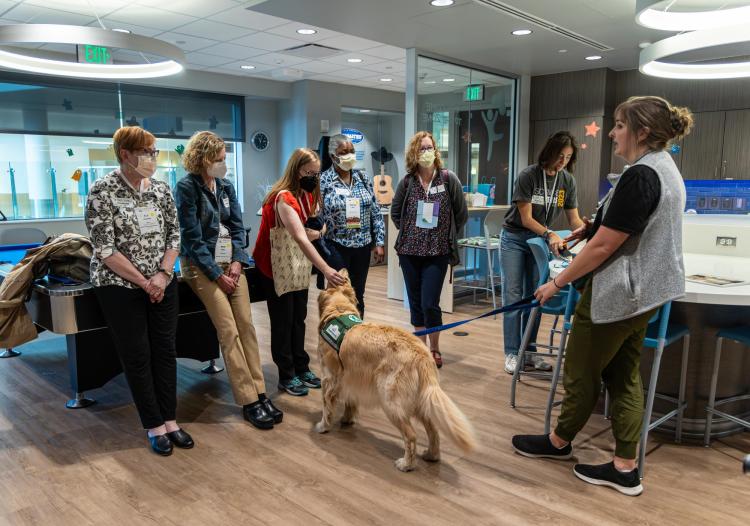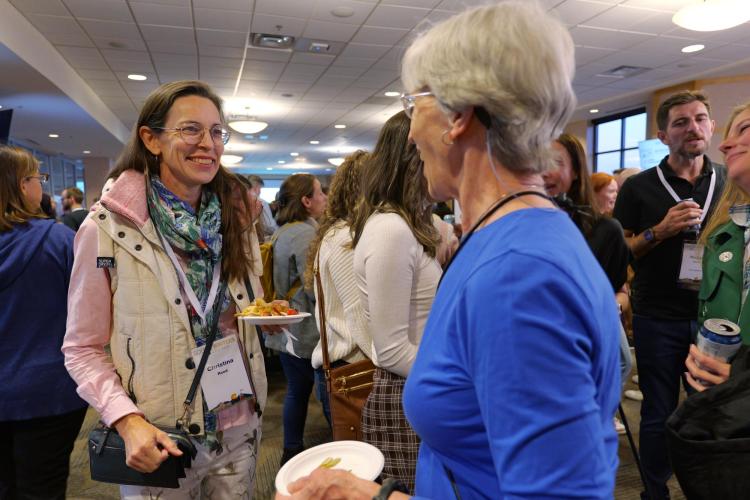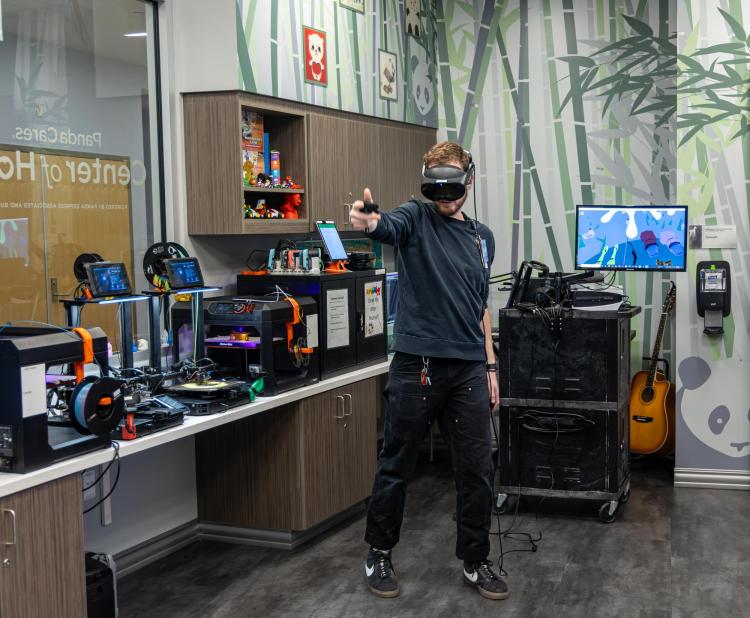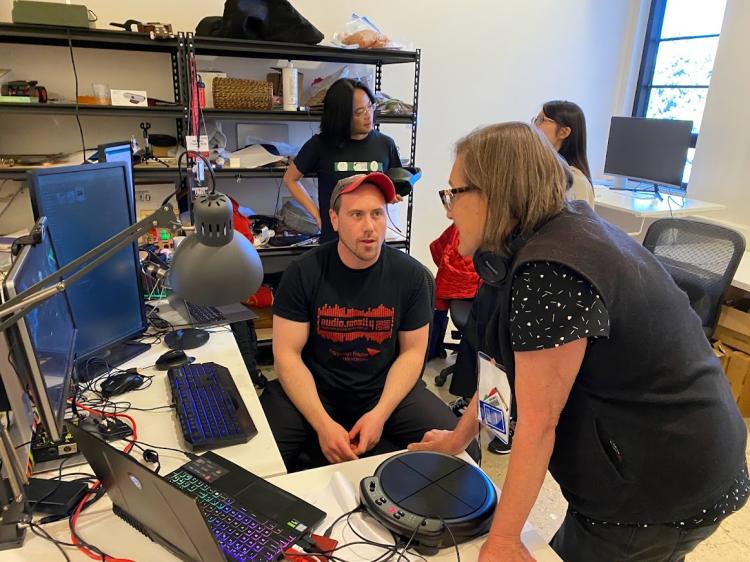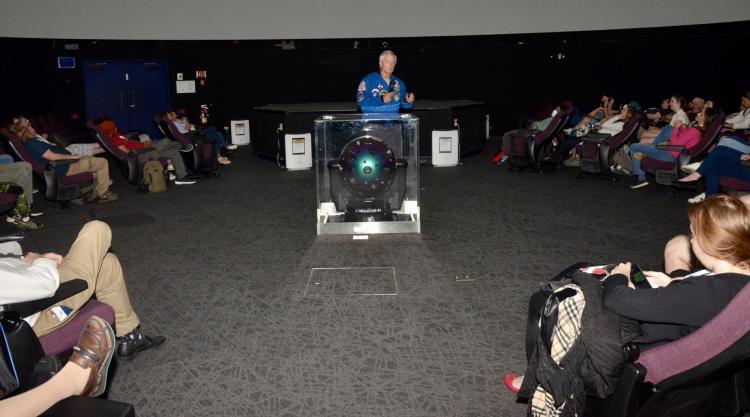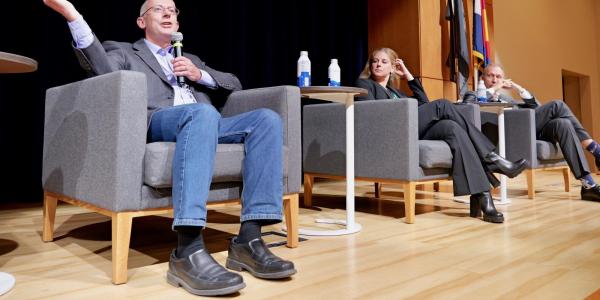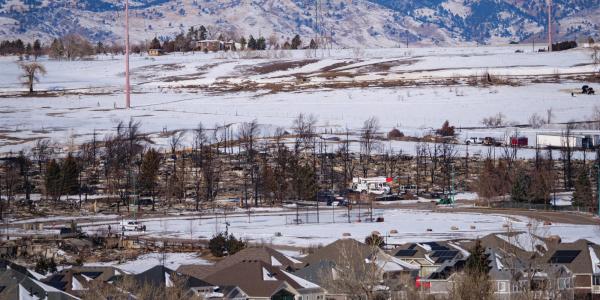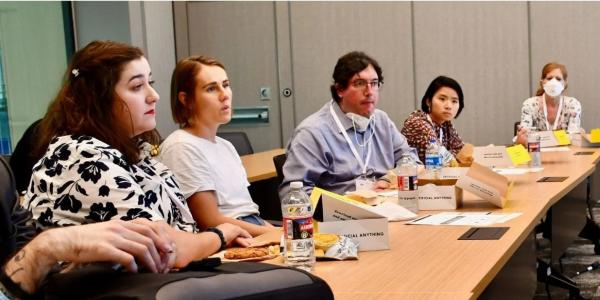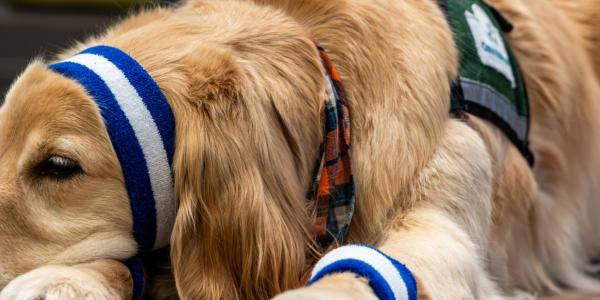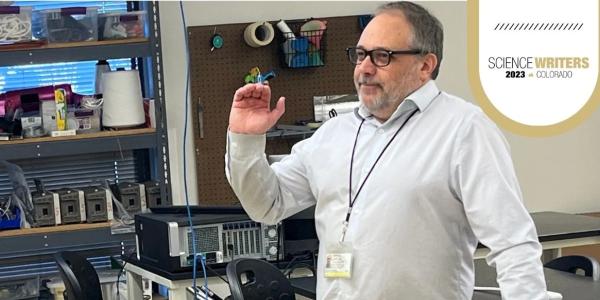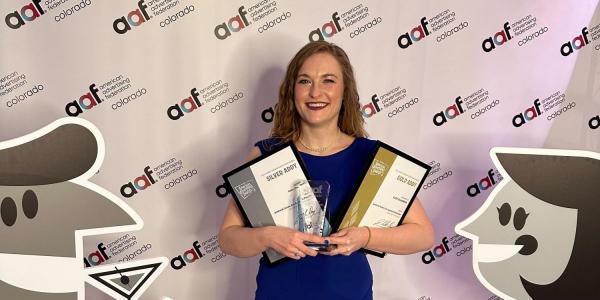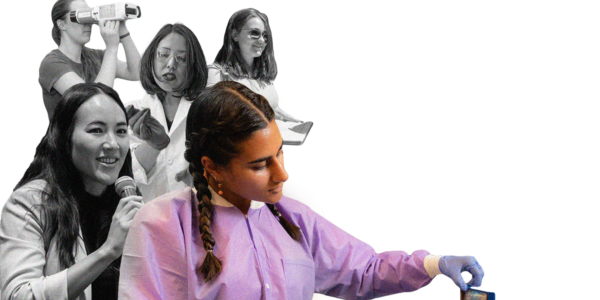When a science writer visits a brewery, they ask a lot of astute chemistry questions.
When a science writer meets an astronaut, they ask a propulsion question (and yes, get a selfie). When they hike with a scientist, there are lots of questions about geology, flora and fauna in the Rockies.
A tour at Sanitas Brewing, a social hour at a planetarium and a geology hike at Chautauqua Park were among the dozens of tours, panel discussions and lectures that took place Oct. 6–10 at SciWriters 2023. By all accounts, the national convening of the National Association of Science Writers and the Council for the Advancement of Science Writing hosted by CU Boulder and CU Anschutz was a whopping success. Yes, the weather was excellent, but the conference sessions also achieved the desired result of piquing attendees’ deep curiosity about the natural world and the humans who inhabit it.
Some 650 journalists from outlets including The New York Times, Scientific American, Slate, Wired, Inside Climate News, Ars Technica, The Washington Post, Discover, NPR, Science, the Associated Press and more, along with institutional communicators representing three countries and 39 states came to Colorado to hone their skills, meet their peers and glean story ideas from some of the top minds in science and medicine. Organizers indicated it was among the largest turnouts in the event’s history.
“We are grateful to you for the vital storytelling you do that advances our work and the work of our peer universities around the nation,” said CU Boulder’s Ann Schmiesing, vice chancellor for academic resource management, in opening remarks. “You are an important part of what we do here, making science essential to our world.”
Playing off the “million dollar view” from the club level at Folsom Field overlooking the Flatirons, where much of the conference was held, Schmiesing said it was actually a “$658 million view.” That is the amount of federally sponsored research reported by CU Boulder last year. She noted that more than half of that funding was generated by CU Boulder’s 12 research institutes, which are closely linked with regional federal research labs, including NOAA, NIST, NREL and NCAR.
“The opportunity for that interaction—and to engage in interdisciplinary, multi-layered research—is what makes CU Boulder an attractive destination for faculty from around the world,” she said.
Faculty on the Anschutz and Boulder attracted the majority of the four-campus CU system’s $1.46 billion in sponsored research funding and gifts during the 2022 fiscal year. Through initiatives such as AB Nexus, the two research powerhouses continue to build partnerships working across disciplines and campuses to propel research and uncover answers to vital questions in science and medicine.
In remarks before a Science Writers plenary with renowned geophysicist and climatologist Michael Mann, Massimo Ruzzene, vice chancellor for research and innovation and dean of the institutes at CU Boulder, noted the size of the CU Boulder research enterprise has almost doubled in the last 10 years.
“This past year has been another record-breaking year and the last month has been a record-breaking month, in terms of research funding,” he said.
The volume of research and expertise on both campuses provided no shortage of fun activities for people who love science and telling stories about it.
Other topics explored included: UFOs (now known as unidentified anomalous phenomena or UAPs); quantum science at the edge of physics; the Colorado River crisis; trauma and resilience among asylum seekers; the neurochemistry of grief; how a bacteria in dirt could become a “stress vaccine”; the science of smell; legal challenges around emerging tech; soft robots; deep brain stimulation for OCD; and the renaissance of psychedelic medicine.
Other activities included visits to the Media Archaeology Lab at CU Boulder (Pac-Man anyone?), the CU Boulder Museum of Natural History, the ATLAS Institute and experiences with extended reality and medical dogs that help pediatric patients. Read more coverage of events below.
SciWriters 2023 talks at CU Boulder
Post-Roe, contraception could be next
During a panel at Science Writers 2023, CU researchers warned the Dobbs decision, which repealed the constitutional right to an abortion, could also limit access to birth control.
Call them UFOs or UAPs, scientists need better data
During a packed event, a panel of journalists and scientists called for removing the stigma around studying unidentified anomalous phenomena—such as strange blips that zoom across the instruments of fighter jets or even mysterious lights in the night sky.
Air quality analysis ongoing 2 years after Marshall Fire
Atmospheric scientist Joost de Gouw tackles the public’s ‘need to know’ following the Marshall Fire with scientific evidence related to air quality in a talk at ScienceWriters 2023 at CU Boulder.
SciWriters 2023 talks at CU Anschutz
Science Writers Treated to a Smorgasbord of Inventive Research
Sports concussions, AI in health and psychedelic therapy round out Lunch With a Scientist topics.
Science Writers Meet the Best Medical Dogtor in the ‘Galaxy’
Conference attendees learn the innovative ways Children’s Hospital Colorado helps kids heal.
Bioengineer Advances Lab-Grown Tissue as Way to Repair Heart
Implantations would “incorporate with the rest of the heart” while driving tissue therapy.

